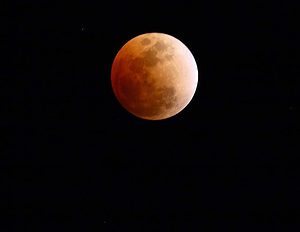
A lunar eclipse occurs when the Earth, moon, and sun are almost perfectly aligned, such that the Earth blocks the Sun’s rays from striking the moon. A total lunar eclipse can be observed when the Moon travels completely into the Earth’s umbra. The last total lunar eclipse occurred on June 15, when it lasted 100 minutes, visible over Europe and South America after sunset, over Africa and most of Asia, and Australia before sunrise.
The next one, and the last eclipse of the year, should be visible in parts of North America, excluding the eastern region and Hawaii, as well as be seen in some parts of Asia, eastern Africa, and eastern Europe. The action begins around 4:45 a.m. Pacific Standard Time when the red shadow of Earth first falls across the lunar disk; by 6:05 a.m. Pacific Time, the Moon will be fully engulfed in red light.
Moreover, this particular total eclipse will come with a unique red aura, since in some parts it will be timed with the moon sinking into the horizon as the sun rises, which will also make it look bigger. For some reason or the other, when the moon is really close to the horizon and it beams through foreground objects, the illusion of larger dimensions are perceived by humans, although digital camera measurements have shown that its exactly the same.
So, if you’re around the total eclipse front, don’t get discouraged by the early hours and stay up or wake up early for this extremely rare event. You have a few days in advance, so be sure to start looking for a great place to watch it.


